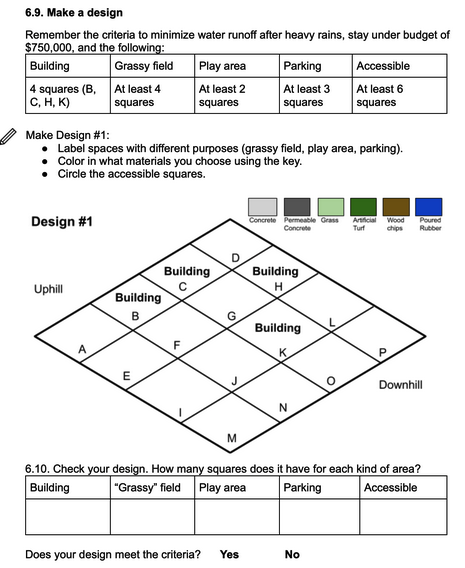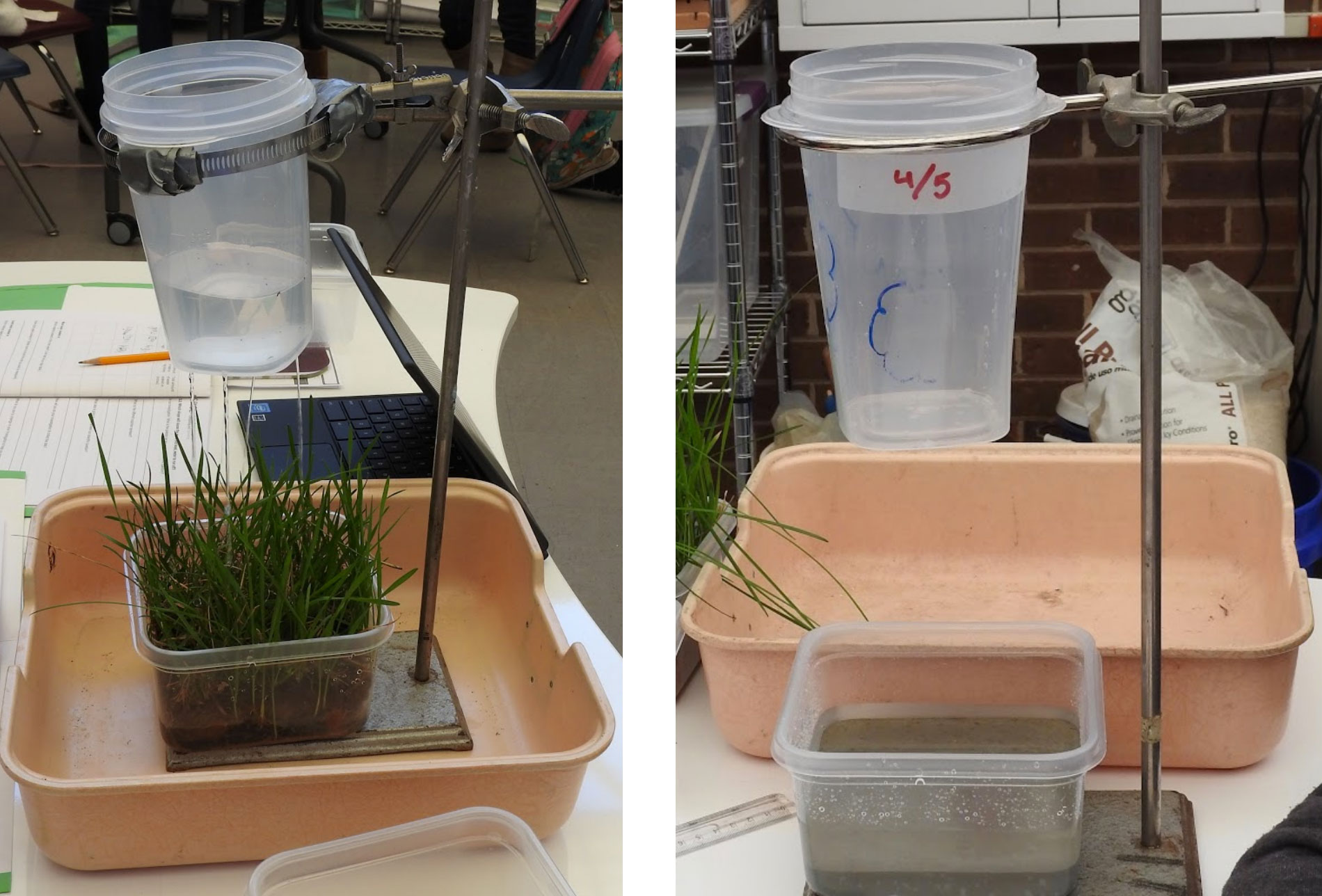The Water Runoff Challenge (WRC) engages students in a design challenge to reduce water runoff around a real elementary school in a mid-Atlantic state. Targeting four performance expectations from the Next-Generation Science Standards, the 3-week curriculum unit was designed for specific learning anchors using a principled design process. The curriculum unit design builds established design frameworks such as knowledge integration (Linn & Eylon, 2011), evidence-centered design (Mislevy & Haertel, 2006), informed engineering (Burghardt & Hacker, 2004), and equitable design (Lee & Buxton, 2008) to support diverse learners to succeed with the challenge. The WRC has been carefully designed to motivate learning about urban water runoff and human impacts on the natural environment by challenging students to design school grounds in a way that minimizes impacts from water runoff.
The WRC uses a combination of computer-based modeling and design activities, a detailed student journal, and hands-on investigations to engage students in sensemaking across science, engineering, and computational thinking.
In the WRC, students:
- Define the problem and create criteria for success. For example, students research the existing school structure to understand how much space should be devoted to parking, grassy fields, buildings, and a play area. Students also look at the local weather history to understand the amount of rainfall their design should be able to withstand.
- Conduct research about the underlying science of water runoff. Through hands-on investigations and conceptual modeling, students come to understand concepts such as absorption, permeability, and water runoff.
- Generate Solutions by drawing multiple designs of school surfaces to meet project criteria.
- Create a computational model. Using specific programming blocks designed for this project, students apply their understanding of the science concepts to the development of a computational model that predicts the cost amount of runoff for their school design for different rainfall events.
- Test and evaluate their designs using their computational model. Students conduct fair tests and document the results of their tests to determine which designs are best. Students share their results with their classmates to see where they might be able to optimize their designs.
- Communicate their designs to their peers in a final presentation. Students support their designs with evidence they gather throughout the project.

